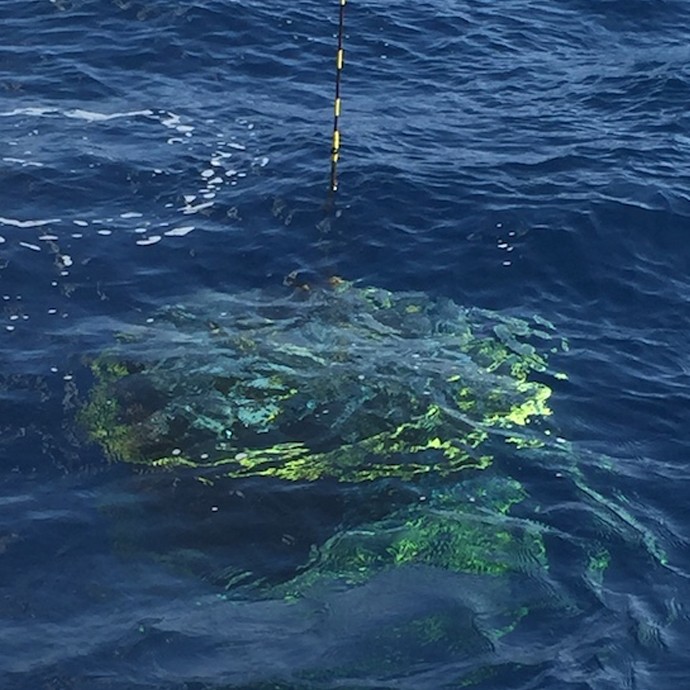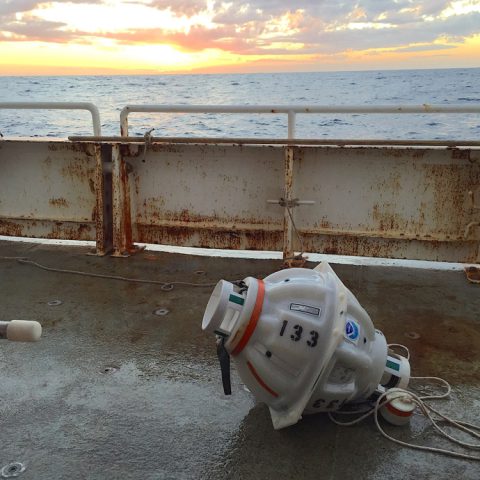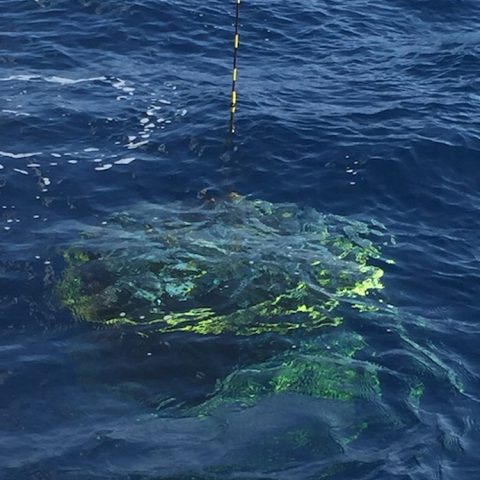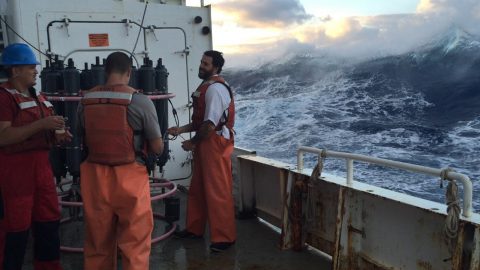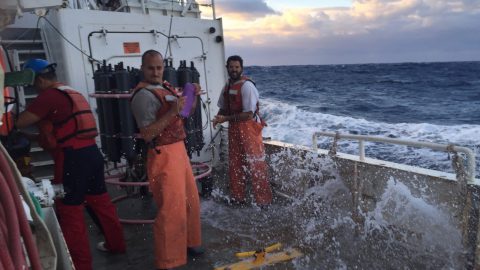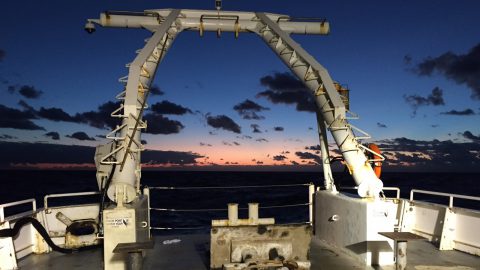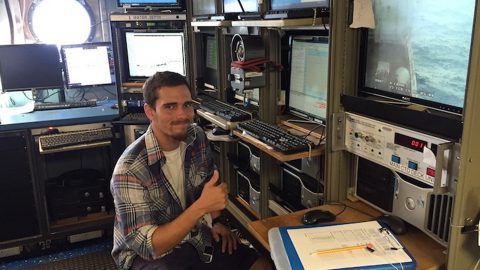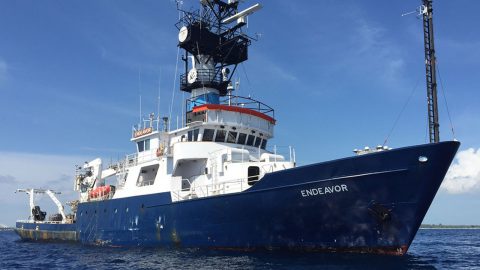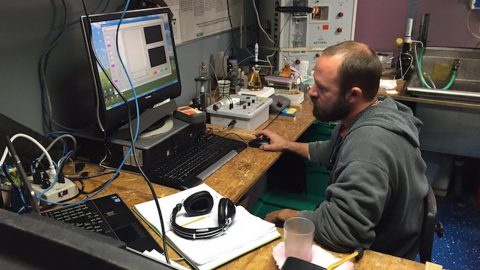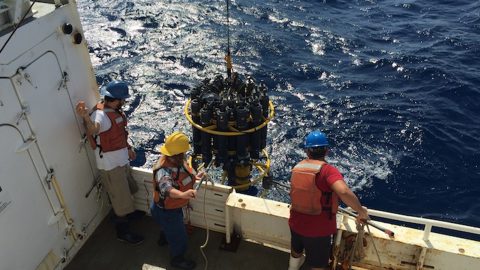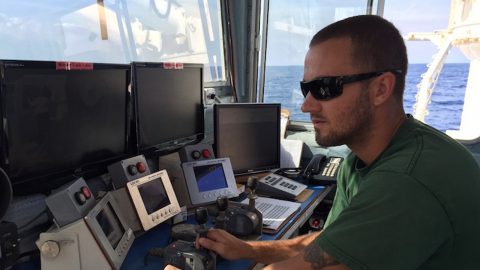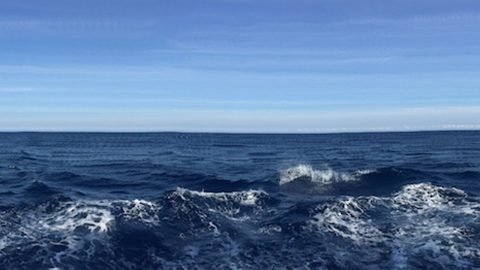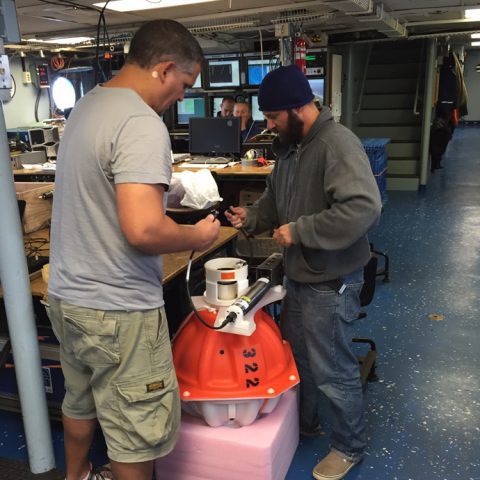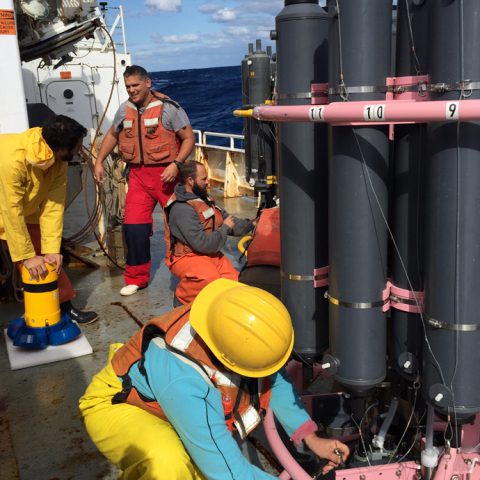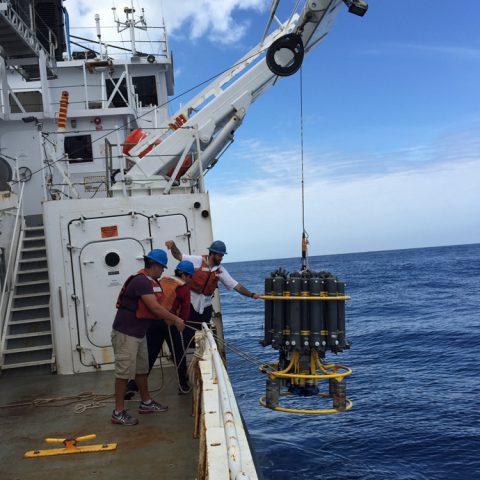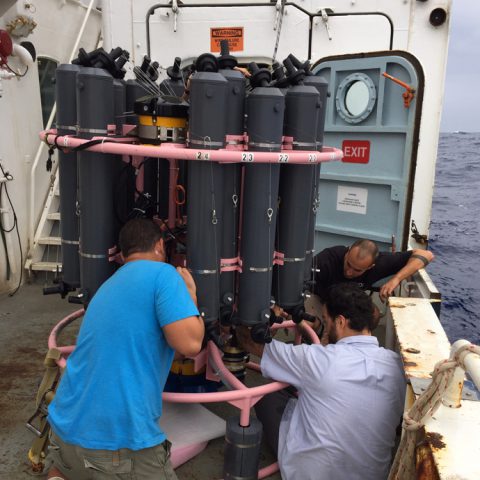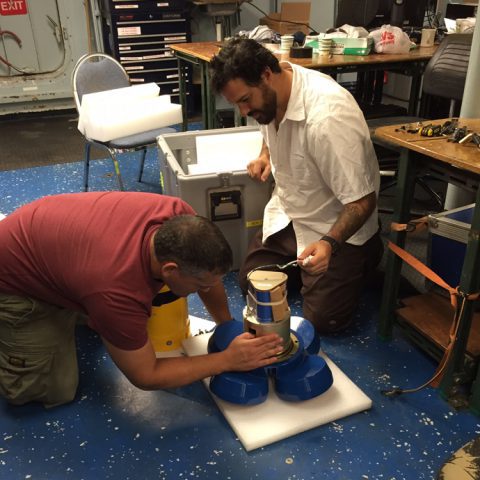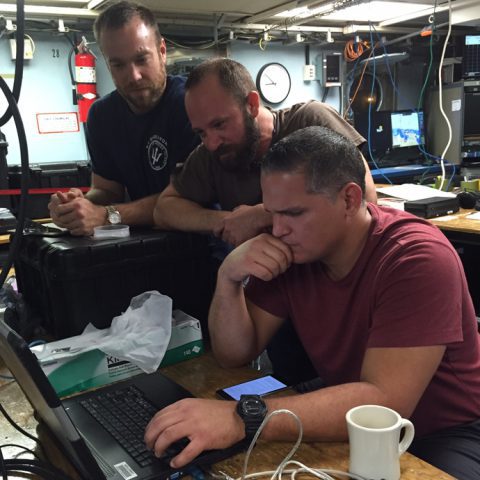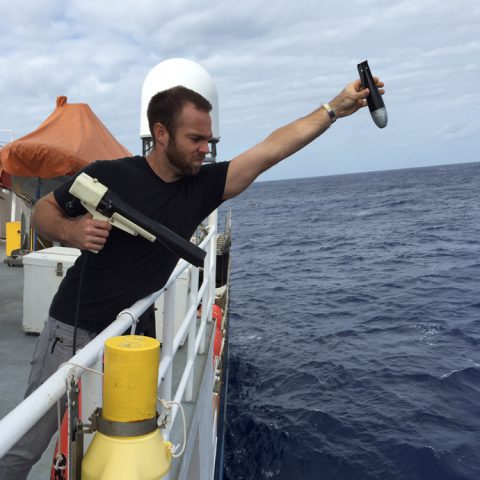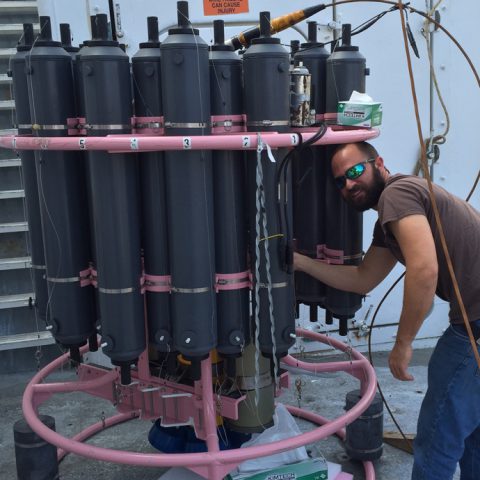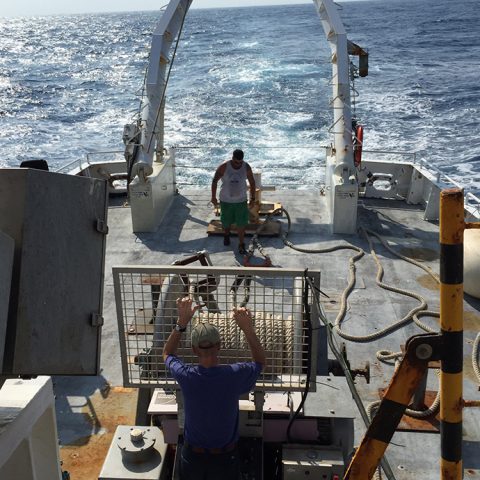AOML physical oceanographers Molly Baringer, Ulises Rivero, Pedro Pena, Andrew Stefanick, Grant Rawson, Jay Hooper and Francis Bringas conducted a Western Boundary Times Series cruise aboard the UNOLS R/V Endeavor on February 15, 2015. Molly Baringer, AOML Deputy Director, served as chief scientist and was supported by additional crew from the University of Puerto Rico. Scientists measured full water column values of salinity, temperature, and oxygen. Scientists also telemetered data from a series of moorings along the 26th north parallel for a joint NOAA and National Science Foundation program designed to monitor the Atlantic meridional overturning circulation current. Francis Bringas also conducted a fall rate experiment that consisted of deploying 200 XBTs from different launch heights.
Image Captions
From Left:
- Inverted echo sounder retrieved from the ocean floor. Image credit: NOAA
- CTD under sparkling clear blue water. Image credit: NOAA
- Working on the deck of the R/V Endeavor during high seas. Image credit: NOAA
- Waves crashing on deck of R/V Endeavor. Image credit: NOAA
- Wench on the stern of the vessel. Photo Credit: NOAA.
- Miguel Figurrola Hernaez running the CTD console on the midnight to noon shift. Image credit: NOAA
- RV Endeavor as viewed from a small boat. Image credit: NOAA
- Analysis goes on 24 hours. Andrew Stefanick on the night shift. Image credit: NOAA
- Finishing the CTD casts with the help of Lynne Butler (Center). Image credit: NOAA
- Ethan Irons is one of the three crew running the winch to owed the CTD, The crew runs 24 hour watches: 4 hours on and 8 hours off. Image credit: NOAA.
- Panoramic view from R/V Endeavor. Image credit: NOAA
- Preparing an inverted echo sounder for deployment. Image credit: NOAA
- Scientist taking a water sample from a CTD rosette. Image Credit: NOAA.
- A CTD rosette overboard during the western boundary time series cruise. Photo Credit NOAA.
- Installing a new ADCP on the CTD rosette. Image credit: NOAA
- Preparing a new ADCP for the CTD rosette. Image credit: NOAA
- The team reviewing the CTD data on R/V Endeavor. Image credit: NOAA
- Jay Hooper conducting an XBT fall rate test. Image credit: NOAA
- Preparing the CTD rosette and niskin bottles for a cast. Image credit: NOAA
- A frame on deck of the R/V Endeavor. Image credit: NOAA
